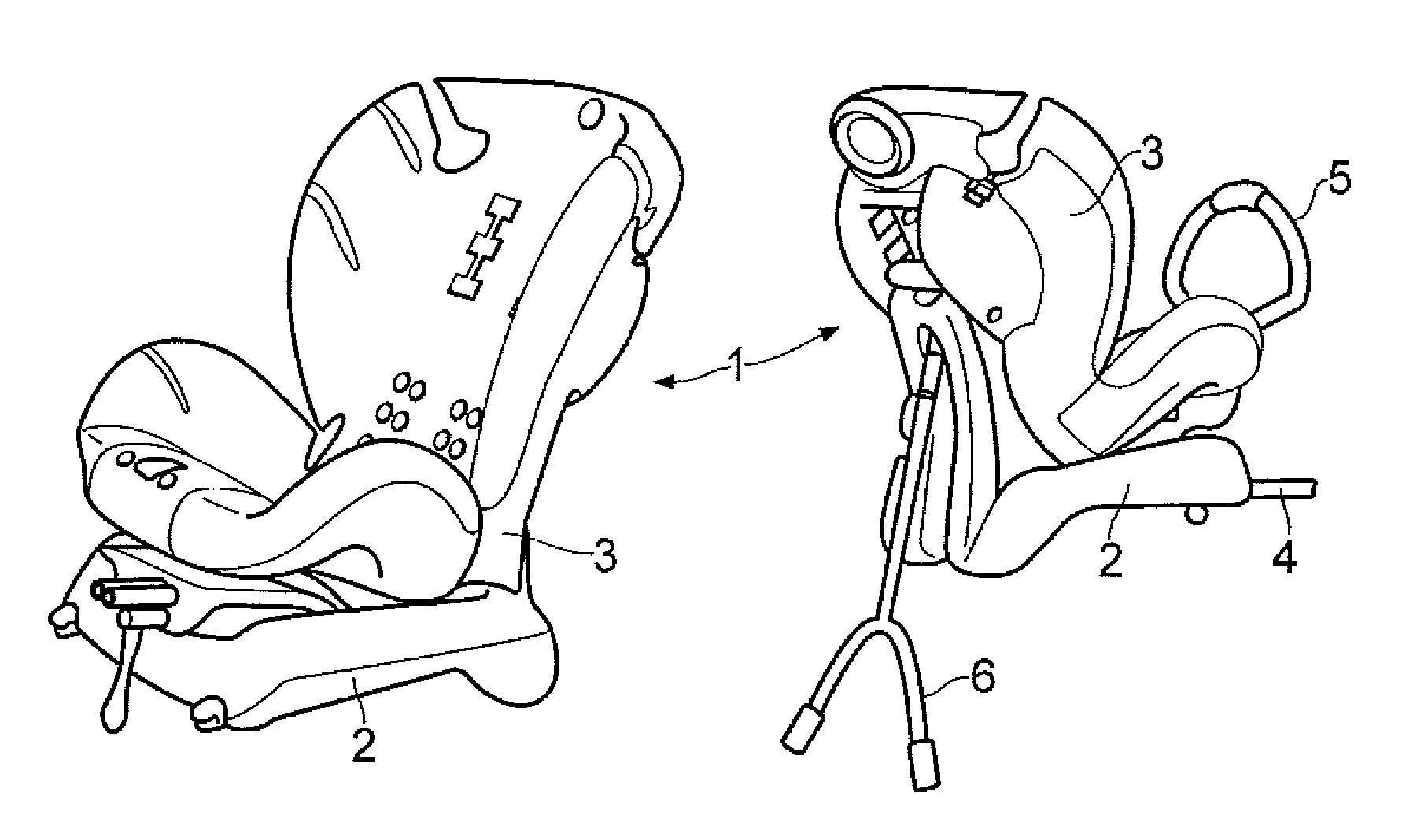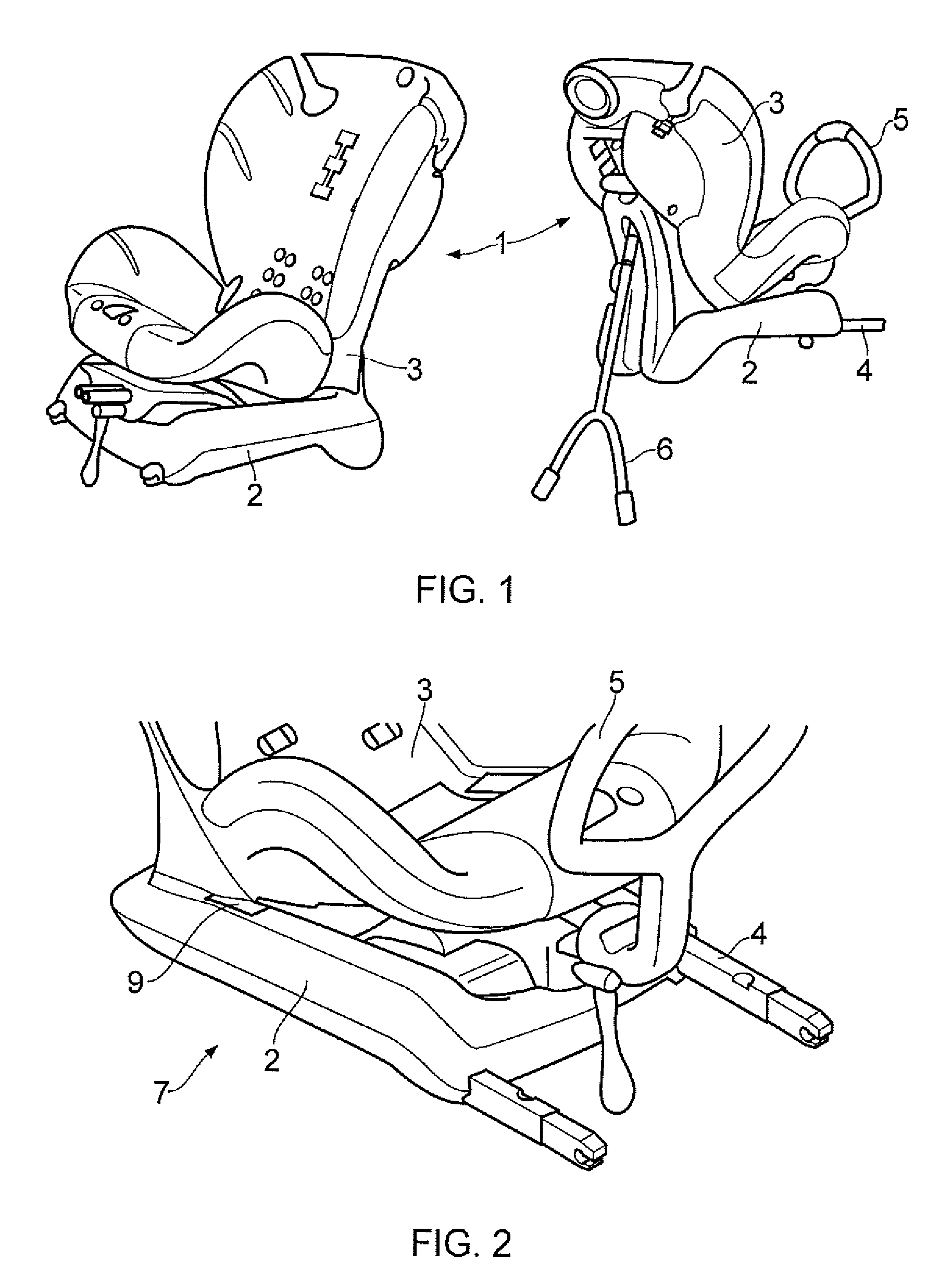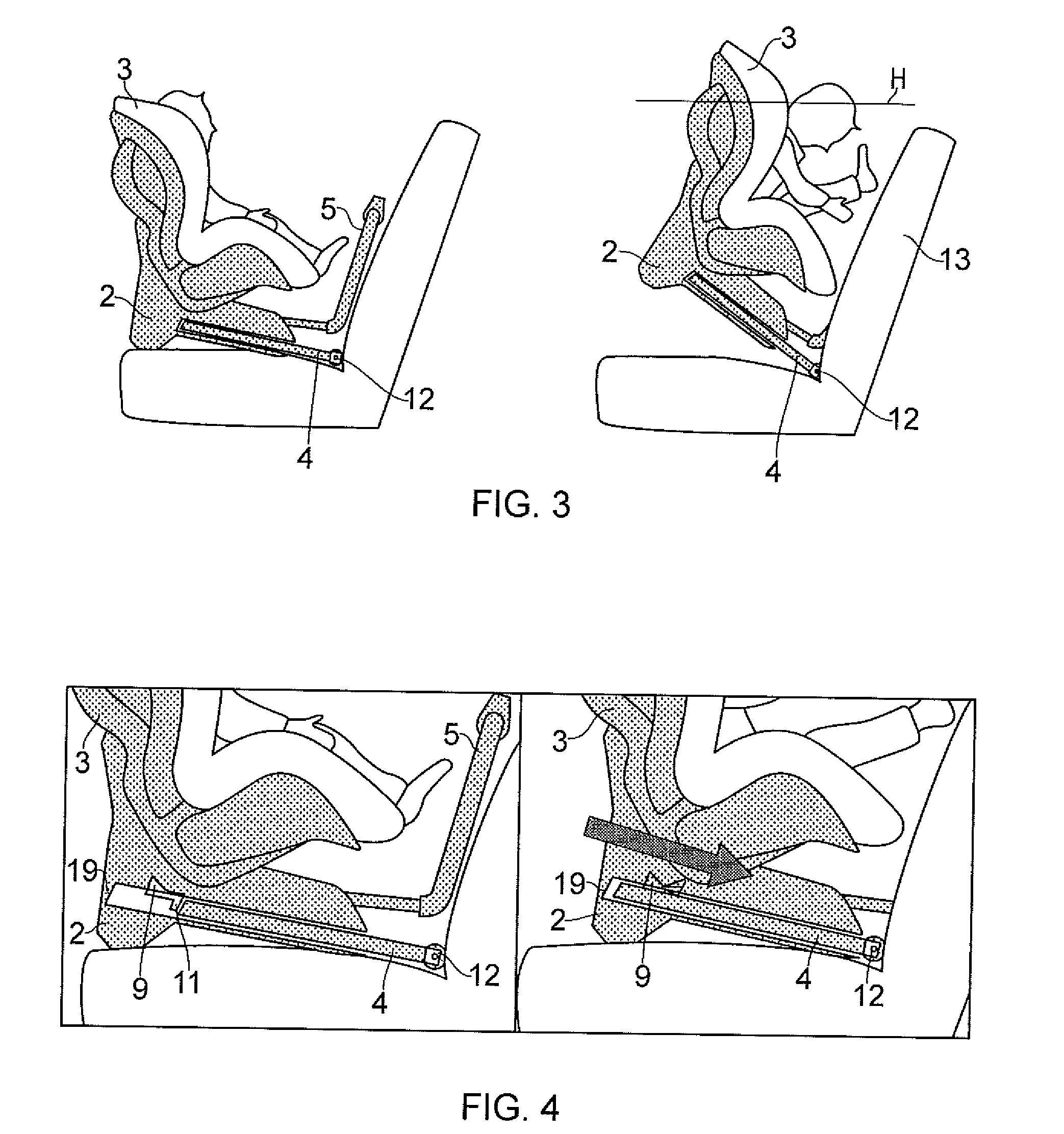Child vehicle restraint system
a child restraint and child technology, applied in the field of child restraint systems, can solve the problem that the rest of the impact energy cannot rotate the child restraint as much, and achieve the effect of minimizing the risk of misuse and improving the crash behaviour of the child restrain
- Summary
- Abstract
- Description
- Claims
- Application Information
AI Technical Summary
Benefits of technology
Problems solved by technology
Method used
Image
Examples
Embodiment Construction
[0031]FIG. 1 shows a child restraint system 1 according to the present invention, where the child restraint is intended to be used both in a forward-facing position (shown on the left side in FIG. 1) and a rearward-facing position (shown on the right side in FIG. 1). The child restraint system 1 comprises a base 2 and a child seat 3 that is releasable connected to the base 2. The base 2 is provided with two ISOFIX connectors 4, such that the base 2 can be connected to standard anchorage points 12 (see FIG. 3) arranged in a vehicle seat 13. The ISOFIX connector 4 is in the form of a bar and is slidably arranged within a void 8 in the base 3. A seat support 5 is connected to the base 3, where the seat support 5 through a tightening and releasing mechanism can be brought in or out of abutment with a back portion of the vehicle seat 13. This will fit the child restraint securely in the vehicle seat when the child restraint is used with the ISOFIX connectors 4. In order to further secure...
PUM
 Login to View More
Login to View More Abstract
Description
Claims
Application Information
 Login to View More
Login to View More - R&D
- Intellectual Property
- Life Sciences
- Materials
- Tech Scout
- Unparalleled Data Quality
- Higher Quality Content
- 60% Fewer Hallucinations
Browse by: Latest US Patents, China's latest patents, Technical Efficacy Thesaurus, Application Domain, Technology Topic, Popular Technical Reports.
© 2025 PatSnap. All rights reserved.Legal|Privacy policy|Modern Slavery Act Transparency Statement|Sitemap|About US| Contact US: help@patsnap.com



